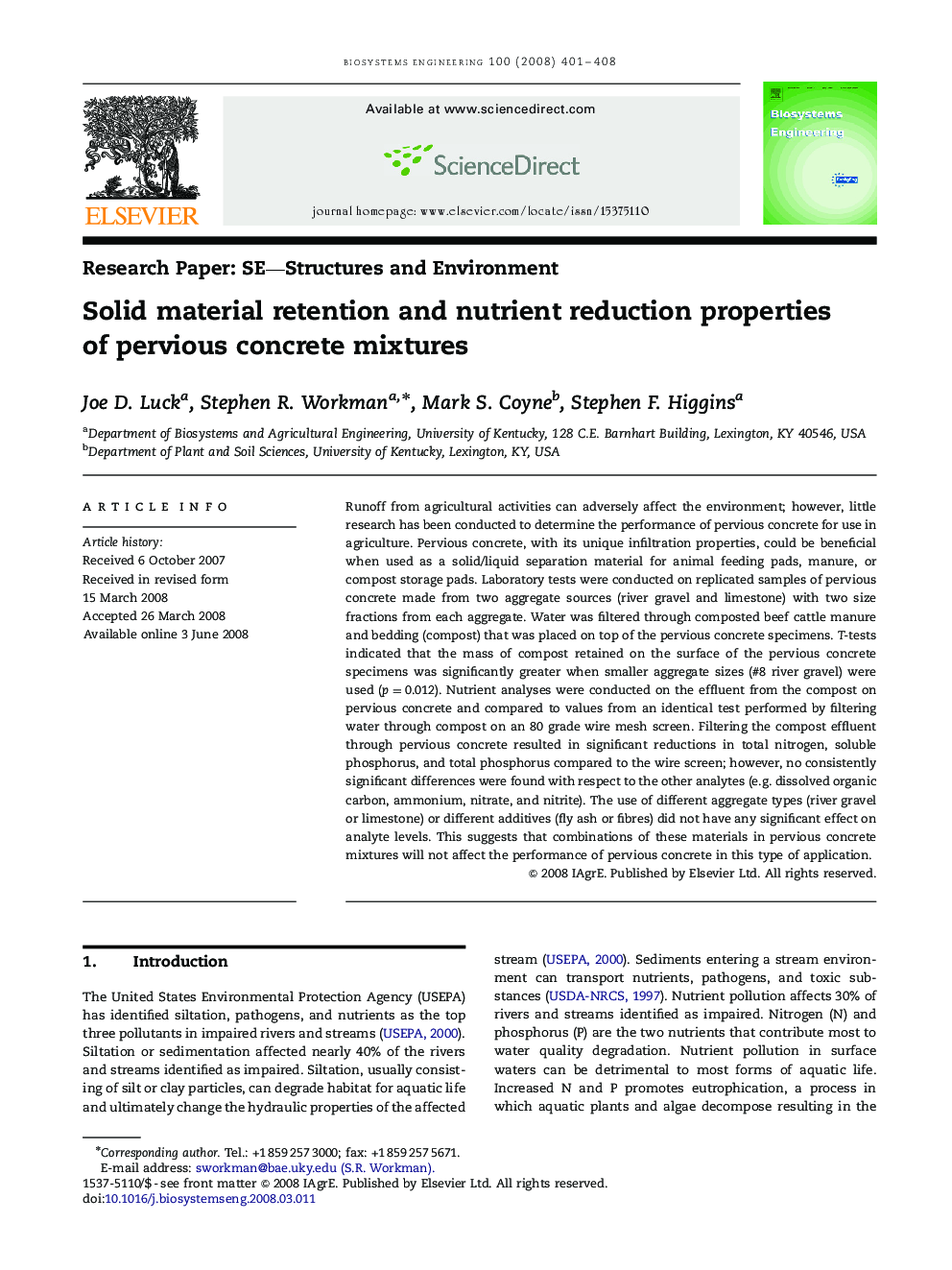| Article ID | Journal | Published Year | Pages | File Type |
|---|---|---|---|---|
| 1712290 | Biosystems Engineering | 2008 | 8 Pages |
Runoff from agricultural activities can adversely affect the environment; however, little research has been conducted to determine the performance of pervious concrete for use in agriculture. Pervious concrete, with its unique infiltration properties, could be beneficial when used as a solid/liquid separation material for animal feeding pads, manure, or compost storage pads. Laboratory tests were conducted on replicated samples of pervious concrete made from two aggregate sources (river gravel and limestone) with two size fractions from each aggregate. Water was filtered through composted beef cattle manure and bedding (compost) that was placed on top of the pervious concrete specimens. T-tests indicated that the mass of compost retained on the surface of the pervious concrete specimens was significantly greater when smaller aggregate sizes (#8 river gravel) were used (p=0.012). Nutrient analyses were conducted on the effluent from the compost on pervious concrete and compared to values from an identical test performed by filtering water through compost on an 80 grade wire mesh screen. Filtering the compost effluent through pervious concrete resulted in significant reductions in total nitrogen, soluble phosphorus, and total phosphorus compared to the wire screen; however, no consistently significant differences were found with respect to the other analytes (e.g. dissolved organic carbon, ammonium, nitrate, and nitrite). The use of different aggregate types (river gravel or limestone) or different additives (fly ash or fibres) did not have any significant effect on analyte levels. This suggests that combinations of these materials in pervious concrete mixtures will not affect the performance of pervious concrete in this type of application.
